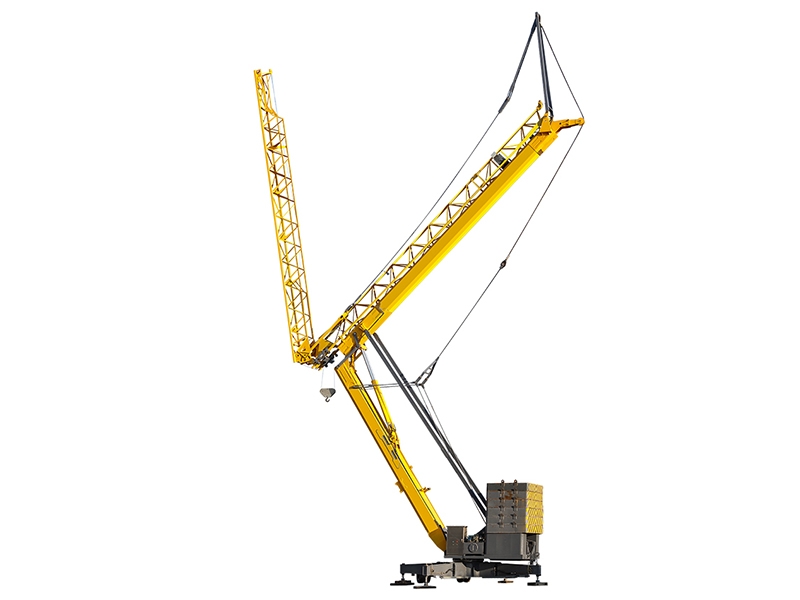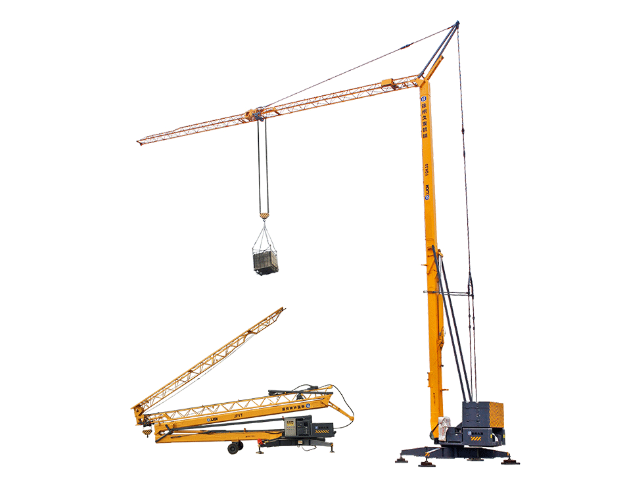Construction safety is a paramount concern in the industry, and advancements in technology have paved the way for significant improvements. One such innovation is the remote control tower crane, which offers enhanced safety features and functionalities.
In this blog, we will explore how remote control tower cranes contribute to construction site safety and why they have become an integral part of modern construction projects.
The Advantages Of Remote Control Tower Cranes:
Remote control tower cranes are designed with safety in mind, providing a number of benefits to construction projects. They can be used for:
A. Enhanced Operator Safety
Remote control tower cranes prioritize operator safety through various means:
- Reduced exposure to hazardous conditions:
Operators can control the crane from a safe and comfortable location, minimizing their exposure to potentially dangerous situations such as extreme weather conditions or hazardous materials.
- Elimination of physical strain and fatigue:
With remote control, operators are not required to navigate the crane physically, reducing the risk of physical strain and fatigue-related accidents.
- Improved visibility for operators:
Remote control systems often incorporate advanced camera technology, providing operators with enhanced visibility of the construction site. This improved line of sight helps them avoid obstacles and potential hazards.

B. Increased Construction Site Safety
The implementation of remote control tower cranes significantly enhances safety at construction sites:
- Minimized risk of accidents and injuries:
Remote control eliminates the need for operators to be physically present in the crane cabin, reducing the risk of accidents caused by human error or miscommunication.
- Enhanced communication and coordination:
Remote control systems facilitate seamless communication between the crane operator and other personnel on the construction site. This improved coordination helps prevent accidents and ensures the safe movement of materials.
- Improved response time in emergency situations:
The remote control enables swift response to emergencies. Operators can quickly halt crane operations or initiate emergency protocols, mitigating potential hazards and safeguarding the construction site.
How To Set Up A Remote Control Tower Crane Work?
- Step 1: Leveling the Base
The first step in erecting a remote control tower crane, such as the 3-ton construction mini tower crane from XJCM, is to ensure the base is level. This is essential for maintaining stability during operation.
- Step 2: Removing the Traveling Wheels
Once the base is leveled, the next step involves removing the traveling wheels. These wheels are used to move the crane to different locations. Detaching them allows for a stationary setup.
- Step 3: Installing the Folding Jib
After removing the traveling wheels, the folding jib is installed. The folding jib consists of collapsible sections that extend the crane’s reach and lifting capacity.
- Step 4: Attaching the Counterweights
To ensure the crane’s stability and balance during operation, counterweights are attached. These counterweights offset the load’s weight, enabling safe lifting and maneuvering.

- Step 5: Remote Control Operation
With the crane fully erected and the counterweights in place, the final step involves operating the crane using a remote control system. This allows the operator to control various functions, such as lifting, rotating, and lowering, from a safe distance.
By following these five steps, the 3-ton construction mini tower crane from XJCM can be successfully erected and ready for efficient and precise lifting operations on construction sites.
Advanced Features and Functionality:
Remote control tower cranes come equipped with advanced features that further enhance construction safety:
A. Remote Monitoring and Control Systems
- Real-time monitoring of crane operations:
Remote control systems allow operators to monitor critical crane data in real time, including load capacity, position, and environmental conditions. This information helps ensure safe operations and prevents overloading or exceeding weight limits.
- Access to critical data for analysis and decision-making:
Remote control technology provides operators and project managers with valuable data for analysis and informed decision-making. This enables proactive safety measures and facilitates efficient project management.
- Remote troubleshooting and maintenance:
Remote control systems allow for remote diagnostics, troubleshooting, and maintenance, reducing downtime and ensuring the crane operates optimally, minimizing potential safety risks.
B. Safety Sensors and Warning Systems
- Collision avoidance systems:
Remote control tower cranes often incorporate collision detection sensors and warning systems. These features alert operators to potential collisions, preventing accidents and damage to both the crane and the surrounding structures.
- Load weight monitoring:
Remote control systems enable real-time monitoring of load weight, ensuring operators adhere to safe load capacity limits and preventing overloading accidents.
C. Integration with Building Information Modeling (BIM)
- Accurate positioning and alignment of materials:
Remote control tower cranes can be integrated with Building Information Modeling (BIM) systems, allowing precise positioning and alignment of materials. This integration minimizes the risk of errors, enhances safety, and improves construction efficiency.
- Efficient coordination with other construction processes:
By integrating with BIM systems, remote control tower cranes can synchronize their operations with other construction processes, such as concrete pouring or steel erection. This coordination reduces potential safety conflicts and enhances overall site safety.
- Enhanced project planning and execution:
The integration of remote control tower cranes with BIM systems enables thorough project planning and simulation. This proactive approach helps identify potential safety risks and implement preventive measures before construction begins.
Real-World Benefits of Remote Control Tower Cranes:
Remote control tower cranes are a critical component of urban construction projects. They can be used to lift heavy equipment, materials, and workers into high-rise buildings quickly and safely. The use of remote control tower cranes significantly reduces the amount of time needed for these tasks, which saves money and improves efficiency.
This technology also reduces the risk of accidents caused by human error, since operators don’t have to be present in dangerous situations such as high-rise construction sites.
Cost Savings and Return on Investment (ROI)
- Reduction in labor costs:
Remote control tower cranes require fewer personnel on-site, reducing labor costs. This cost-saving aspect, combined with increased productivity, contributes to a favorable return on investment.
- Minimized material wastage:
Remote control technology enables precise material handling, minimizing the risk of accidents that could result in material wastage. This not only reduces costs but also contributes to sustainable construction practices.
- Improved project timelines and client satisfaction:
The enhanced safety and efficiency offered by remote control tower cranes lead to improved project timelines. Meeting or exceeding project deadlines enhances client satisfaction and strengthens business relationships.
Final words:
Remote control tower cranes have revolutionized construction site safety by prioritizing operator well-being and offering advanced features and functionalities.
Through enhanced operator safety, increased construction site safety, and various technological advancements, these cranes significantly contribute to minimizing accidents and injuries.



